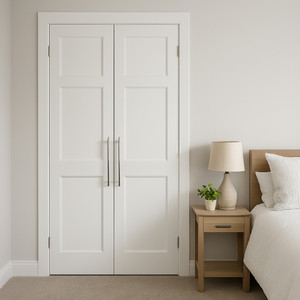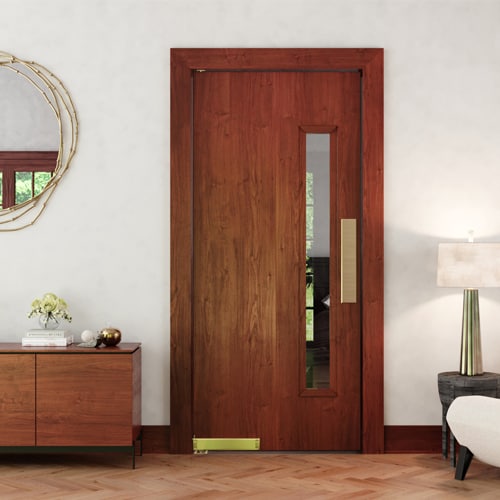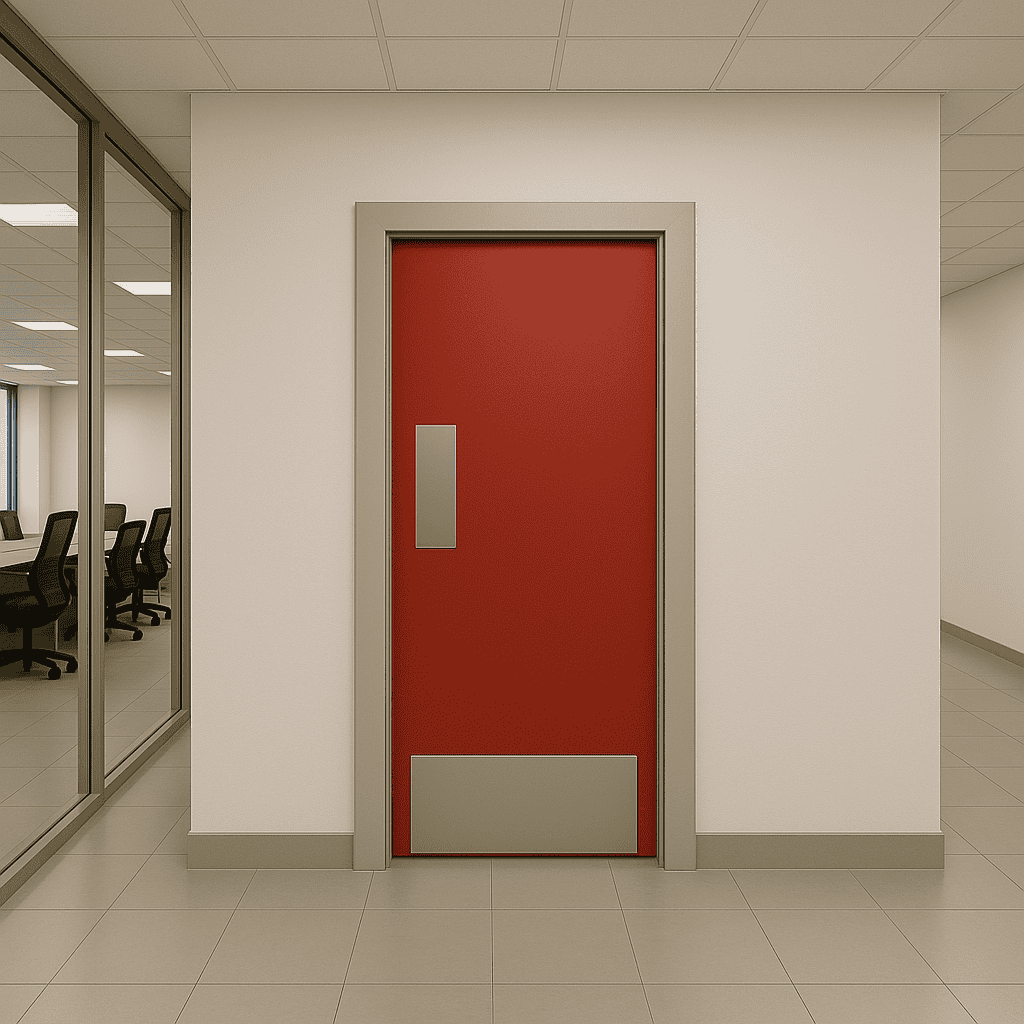
Unlocking the Beauty of Swinging Doors: Tips for Incorporating Them Into Your Interior Design
Unlocking the Beauty of Swinging Doors: Tips for Incorporating Them Into Your Interior Design
Introduction to Swinging Doors
Swinging doors are a versatile and stylish addition to any home, offering both aesthetic appeal and practical benefits. Unlike traditional doors that only open in one direction, swinging doors pivot on hinges, allowing them to open both ways. This unique feature makes them ideal for various spaces in your home, providing easy access and enhancing the flow between rooms. In this guide, we’ll explore the beauty of swinging doors and offer tips on incorporating them into your interior design.
What Are Swinging Doors?
Swinging doors, also known as double-action doors, are designed to swing in both directions—either inward or outward. This makes them particularly useful in areas with high foot traffic, where quick and easy access is important. Swinging doors are commonly found in kitchens, restaurants, and commercial spaces, but they can also add a distinctive touch to residential interiors.
The Appeal of Swinging Doors in Modern Interiors
The appeal of swinging doors lies in their ability to combine form and function. They offer a seamless transition between rooms, contribute to an open and airy feel, and can be customized to fit any design aesthetic, from traditional to contemporary. Whether you’re looking to save space, improve the flow of your home, or make a bold design statement, swinging doors are a perfect solution.
Types of Swinging Doors

Single Swinging Doors
Single swinging doors are ideal for smaller spaces where a full double door might be too overwhelming. These doors work well in bathrooms, pantries, or closets, offering easy access without requiring much room.
Double Swinging Doors
Double swinging doors are a classic choice for larger spaces, such as between a kitchen and a dining room. They provide a grand entrance and are particularly useful in high-traffic areas where ease of movement is essential.
Saloon or Café Doors
Saloon doors, often seen in Western movies, are half-height swinging doors that add a touch of charm and nostalgia to a space. These are great for dividing rooms like a kitchen and dining area without completely obstructing the view.
Dutch Doors
Dutch doors are a unique variation of swinging doors, divided horizontally so that the top and bottom halves can open independently. They are ideal for kitchens, nurseries, or areas where you want to maintain a visual connection while controlling access.
Pivot Doors
Pivot doors are a modern take on swinging doors, where the door pivots on a central hinge, creating a striking visual effect. These doors are perfect for contemporary homes and are often used as a statement piece in entryways or living rooms.
Choosing the Right Style for Your Space
Traditional vs. Modern Swinging Doors
When choosing swinging doors, consider the overall style of your home. Traditional designs often feature wood with decorative panels or glass inserts, while modern styles might use materials like metal or frameless glass for a sleek, minimalist look.
Matching Swinging Doors with Interior Décor
To ensure that your swinging doors complement your interior décor, choose materials, colors, and finishes that match the existing elements in your home. For example, wooden doors with a rich stain can add warmth to a cozy, rustic room, while glass and metal doors can enhance a modern, industrial space.
Swinging Doors for Small Spaces
In smaller spaces, opt for single swinging doors or compact designs like saloon doors that don’t require much clearance. These doors help maintain the flow of movement while saving valuable space.
Materials and Finishes for Swinging Doors

Wood
Wood is a classic material for swinging doors, offering warmth and a timeless appeal. It can be stained, painted, or left natural, depending on your design preferences. Solid wood is durable and works well in both traditional and modern interiors.
Glass
Glass swinging doors are perfect for creating a sense of openness and allowing light to pass through. They can be clear, frosted, or tinted to provide the desired level of privacy. Glass doors work especially well in modern or minimalist homes.
Metal
Metal swinging doors, such as those made from aluminum or steel, are durable and add an industrial edge to your interior design. They are often used in contemporary spaces and can be combined with glass panels for a lighter look.
Composite Materials
Composite doors offer the best of both worlds, combining the aesthetic appeal of wood with the durability of synthetic materials. They are resistant to warping, moisture, and pests, making them a practical choice for high-traffic or humid areas.
Choosing the Right Finish
The finish of your swinging doors can greatly influence their look and feel. Consider options like matte, glossy, or textured finishes to match your home’s style. For a cohesive look, match the finish of the door to other elements in the room, such as cabinetry, furniture, or hardware.
Functional Benefits of Swinging Doors
Space-Saving Design
Swinging doors are excellent for saving space because they don’t require a swing radius like traditional doors. This makes them ideal for areas with limited space, such as narrow hallways or small rooms.
Easy Access and Flow Between Rooms
One of the key benefits of swinging doors is the ease with which they allow movement between rooms. This makes them perfect for busy areas like kitchens, where you might need to move quickly between spaces with your hands full.
Versatility in Design
Swinging doors are incredibly versatile and can be tailored to suit any design style, from rustic barn doors to sleek, modern glass panels. Their ability to swing both ways also makes them practical for a variety of applications, from room dividers to closet doors.
Improved Ventilation
Swinging doors can help improve ventilation by allowing air to flow more freely between rooms. This is particularly useful in kitchens, bathrooms, or laundry rooms, where good airflow is essential.
Where to Use Swinging Doors in Your Home

Kitchen to Dining Room
Swinging doors are a popular choice for separating the kitchen from the dining room, allowing for easy movement between the two spaces while cooking and serving meals. They also help contain kitchen odors and noise.
Pantry or Laundry Room
Swinging doors are practical for pantries and laundry rooms, providing quick access without needing to fumble with handles. They keep these functional areas out of sight while maintaining easy entry.
Bathroom
In bathrooms, swinging doors can add a touch of elegance, particularly when used for shower enclosures or as a partition between the toilet and the rest of the bathroom. Glass doors are a popular choice here for their ability to open up the space visually.
Home Office
For a home office, swinging doors offer the flexibility of creating a quiet, focused workspace while maintaining a connection to the rest of the home. Solid wood or frosted glass doors can provide the privacy needed for concentration.
Living Room or Parlor
Swinging doors can add a dramatic entrance to a living room or parlor, especially if they are designed to match the style of the room. They can also help delineate spaces in open-concept homes without disrupting the flow of the layout.
Installation Tips for Swinging Doors
Measuring for a Perfect Fit
Accurate measurements are crucial for the successful installation of swinging doors. Measure the width, height, and depth of the door opening, as well as the surrounding space, to ensure the doors can swing freely without obstruction.
Professional Installation vs. DIY
While installing swinging doors might seem like a straightforward DIY project, professional installation is often recommended, especially for heavier or more complex designs like pivot doors. Professionals can ensure that the doors are properly aligned, balanced, and secure.
Common Installation Challenges
Challenges in installing swinging doors include ensuring that the hinges are perfectly aligned, dealing with uneven floors or walls, and making sure that the doors swing smoothly in both directions. Professional installers have the tools and experience to address these challenges effectively.
Customization Options for Swinging Doors
Decorative Panels and Glass Inserts
Swinging doors can be customized with decorative panels, glass inserts, or even intricate carvings to match your interior design. Consider frosted glass for privacy, clear glass for openness, or stained glass for a touch of color.
Hardware and Handle Choices
The hardware you choose for your swinging doors can greatly influence their look and functionality. Opt for classic brass or bronze for a traditional feel, or choose sleek stainless steel or matte black for a modern aesthetic. Handles, hinges, and other hardware should complement the overall design of the door.
Color and Finish Customization
Swinging doors can be painted or stained in a variety of colors to match your home’s décor. Whether you prefer a natural wood finish, a bold color, or a subtle neutral tone, customization options are nearly endless.
Maintenance and Care for Swinging Doors
Cleaning and Protecting the Surface
Regular cleaning is essential to keep your swinging doors looking their best. For wood doors, use a wood cleaner and polish to maintain the finish. Glass doors should be cleaned with a glass cleaner to remove smudges and fingerprints. Metal doors can be wiped down with a damp cloth to remove dust and grime.
Maintaining Hinges and Mechanisms
The hinges and mechanisms of swinging doors should be lubricated periodically to ensure smooth operation. Check for any loose screws or parts and tighten them as needed. Regular maintenance will extend the life of your doors and keep them functioning properly.
Addressing Wear and Tear
Swinging doors are subject to wear and tear, especially in high-traffic areas. Inspect your doors regularly for signs of damage, such as scratches, dents, or misalignment. Address any issues promptly to prevent further damage and maintain the doors’ appearance and functionality.
Swinging Doors and Interior Design Trends

Minimalist Designs
Minimalist swinging doors with clean lines and simple materials, like glass or wood, are perfect for modern interiors. These doors blend seamlessly into the surroundings, enhancing the space without overwhelming it.
Industrial Style
Industrial-style swinging doors, often made from metal or a combination of metal and glass, are popular in contemporary homes. These doors add a rugged, urban edge to your interior design, making them a bold focal point in any room.
Rustic and Farmhouse Aesthetics
For a more rustic or farmhouse look, consider swinging doors made from reclaimed wood or featuring distressed finishes. These doors add warmth and character to your home, complementing a cozy, lived-in aesthetic.
Smart Technology Integration
Smart technology is making its way into swinging doors, with features like automated opening and closing, remote control access, and integration with home automation systems. These innovations provide convenience and add a modern touch to traditional door designs.
Conclusion
Swinging doors are a stylish and functional addition to any home, offering a unique combination of beauty and practicality. Whether you’re looking to enhance the flow between rooms, save space, or make a design statement, swinging doors provide a versatile solution that can be customized to fit your needs. With the right materials, design, and installation, swinging doors can transform your living space and add value to your home.
